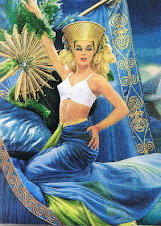
jfbc785t2q
This example of a jelly belly with carved Lucite is selling for $425.00 on www.trifari.com/ . I did some limited research and they are very expensive.
Many collectors, including myself, love the jelly belly pin. They are generally figural pins such as fish, birds, turtles, swans and other creatures. Each animal has a clear acrylic stone inset in his belly or center of his body. They were first created by Trifari in the 1940's and copied by Coro. View our slide show of pins and you will see an example of a traditional jelly belly pin that we have for sale at
http://www.etsy.com/view_listing.php?listing_id=27061806











